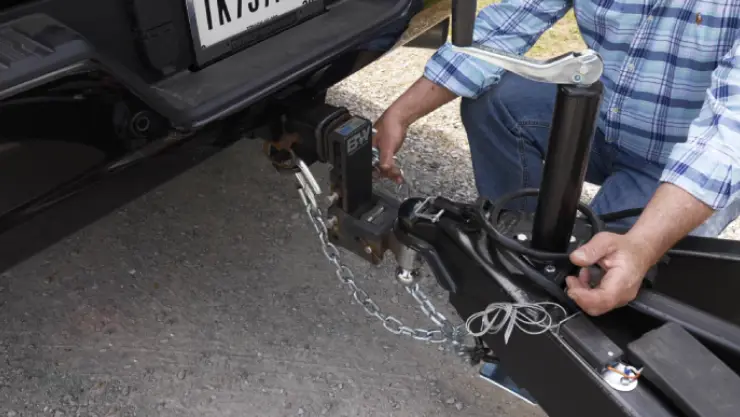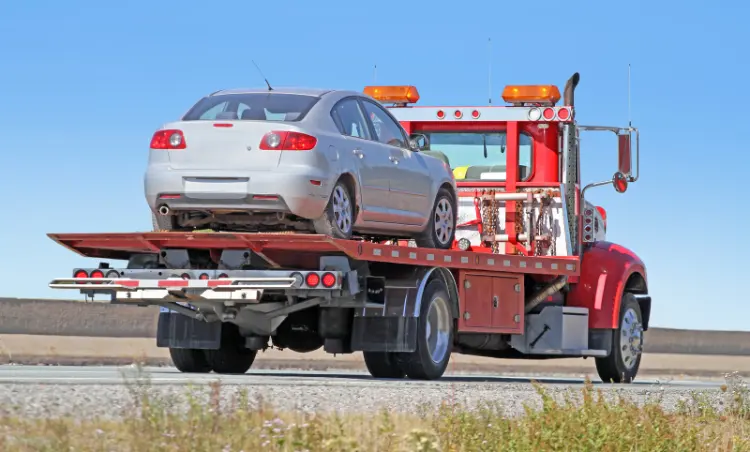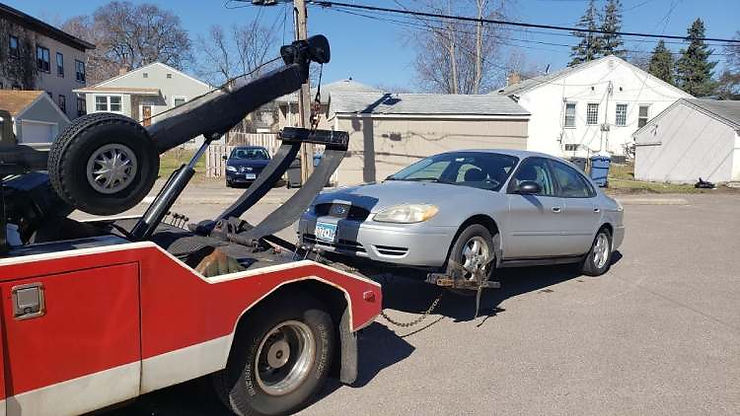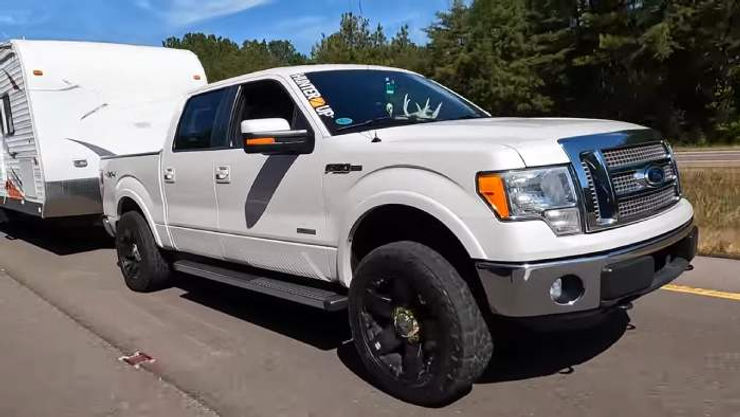Safety chains are an integral aspect of the towing process, serving as a crucial line of defense to keep your trailer securely hitched to your towing vehicle. You will notice that towing companies prioritize the proper attachment of safety chains when you contact them.
When you need to tow a vehicle, how should a trailer safety chain be attached to the towing vehicle?
The trailer safety chains should be securely attached from the trailer frame to the towing vehicle.
When attaching the chains, you should ensure they have an adequate breaking strength that exceeds the trailer’s weight. Chains shouldn’t drag on the ground to prevent wear and sparks, but there should be enough slack to turn.
Using bolt tabs on the tow vehicle’s frame, crisscross the chains under the trailer tongue in an X pattern to ensure a balanced pull.
We will discuss the proper steps in detail, so you can confidently ensure the safety and security of your towing endeavors.
How to Attach Trailer Safety Chains to the Towing Vehicle: Step-By-Step Guide
There are several important steps to follow when connecting a safety chain to a towing vehicle. The following are included:
-
Step 1: Cross the chains under the hitch
-
Step 2: Choose the attachment points
-
Step 3: Attach the chains to the towing vehicle
-
Step 4: Leave adequate slack
-
Step 5: Connect the chains to the trailer
-
Step 6: Check the security of connections
Let’s go over each step of attaching the towing vehicle to the trailer safety chains in detail.
Step 1: Cross the Chains Under the Hitch
To properly connect your trailer safety chains to your towing vehicle, you need to position the trailer coupler over the hitch ball and secure it.
To do this, align the trailer’s coupler directly over the towing vehicle’s hitch ball. Lower the coupler onto the hitch ball, ensuring that the ball is fully seated within the coupler.
If your trailer has a latch mechanism, engage it to lock the coupler onto the hitch ball. When there is a lever, push it down to secure the coupler, and then insert a cotter pin or secure the locking mechanism to prevent accidental disconnection.
Check the connection by attempting to lift the trailer tongue slightly. It should be firmly attached to the towing vehicle.
With the coupler properly attached to the hitch ball, crisscross the two safety chains under the trailer’s tongue. The crossed chains should form an “X” pattern underneath the hitch.
Step 2: Choose the Attachment Points
The next step is to identify the attachment points on the towing vehicle. Look for bolt tabs welded to the towing vehicle’s frame, as these bolt tabs serve as reliable anchor points for attaching the safety chains.
These attachment points are typically positioned near the hitch assembly for convenience. Use only designated attachment points to attach your trailer safety chains to ensure optimal safety.
Step 3: Attach the Chains to the Towing Vehicle
Now you have to attach the chains to the towing vehicle. To attach the chains to the towing vehicle, use a sturdy bolt, spring washer, and nut for each safety chain.
Secure them to the designated attachment points on the towing vehicle. Tighten the nuts securely to prevent any movement or detachment of the chains while in transit.
Step 4: Leave Adequate Slack
While attaching the chains, ensure that you leave enough slack to allow for turns and maneuvers without restricting your trailer’s movement.
Ensure that the chains are not too long and they don’t drag on the ground, which can lead to sparks and potential hazards while towing.
Step 5: Connect the Chains to the Trailer
Attach the opposite ends of the safety chains to the designated chain retainers on the trailer. These retainers are often located near the trailer’s coupler.
Secure the chains using appropriate hardware, such as pliers or a wrench, making sure the connections are strong and reliable.
Step 6: Check the Security of Connections
Before hitting the road, double-check the security of the connections. Give each chain a slight tug to ensure that they are securely fastened and will not come loose during towing.
Ensure that everything is in place and that your trailer safety chains are correctly attached to the towing vehicle to prevent any accidents and loss of cargo.
So, you can now secure trailer safety chains to the towing vehicle. Even if you call a towing service in San Jose, you will see that the professionals also follow these steps to ensure that trailer safety chains are attached to the towing vehicle.
What grade of the chain does a towing company use for towing?
Towing companies typically use Grade 43, Grade 70, or Grade 80 chains for their towing operations. These different grades of chains offer varying levels of strength and durability to meet the specific requirements of towing tasks.
Grade 43 chains are known for their versatility and strength, making them suitable for securing larger items in logging, agriculture, and marine industries.
When towing heavy loads within industries such as trucking and highway construction, a tow truck will arrive in around 30 minutes with Grade 70 chains. They are a popular choice due to their approximately 20% higher strength than Grade 43.
For even more demanding scenarios like overhead lifting and heavy-duty towing, towing companies rely on Grade 80 chains specifically engineered to handle these extreme conditions.
Ensure Safety and Confidence for Your Towing Journey
When preparing to tow, follow the six steps listed above to connect the trailer’s safety chains and ensure a secure and accident-free trip.
You’ll ensure that your trailer is firmly hitched to your towing vehicle, reducing the risk of detachment and accidents on the road.
Each step contributes to a safe journey, from crisscrossing chains under the hitch to using appropriate attachment points, leaving the right amount of slack, and checking connections.
Prioritizing the correct grade of the chain is equally important: Grade 43, 70, and 80 chains are tailored to your towing needs. Now you’re all set to hit the road with confidence.






